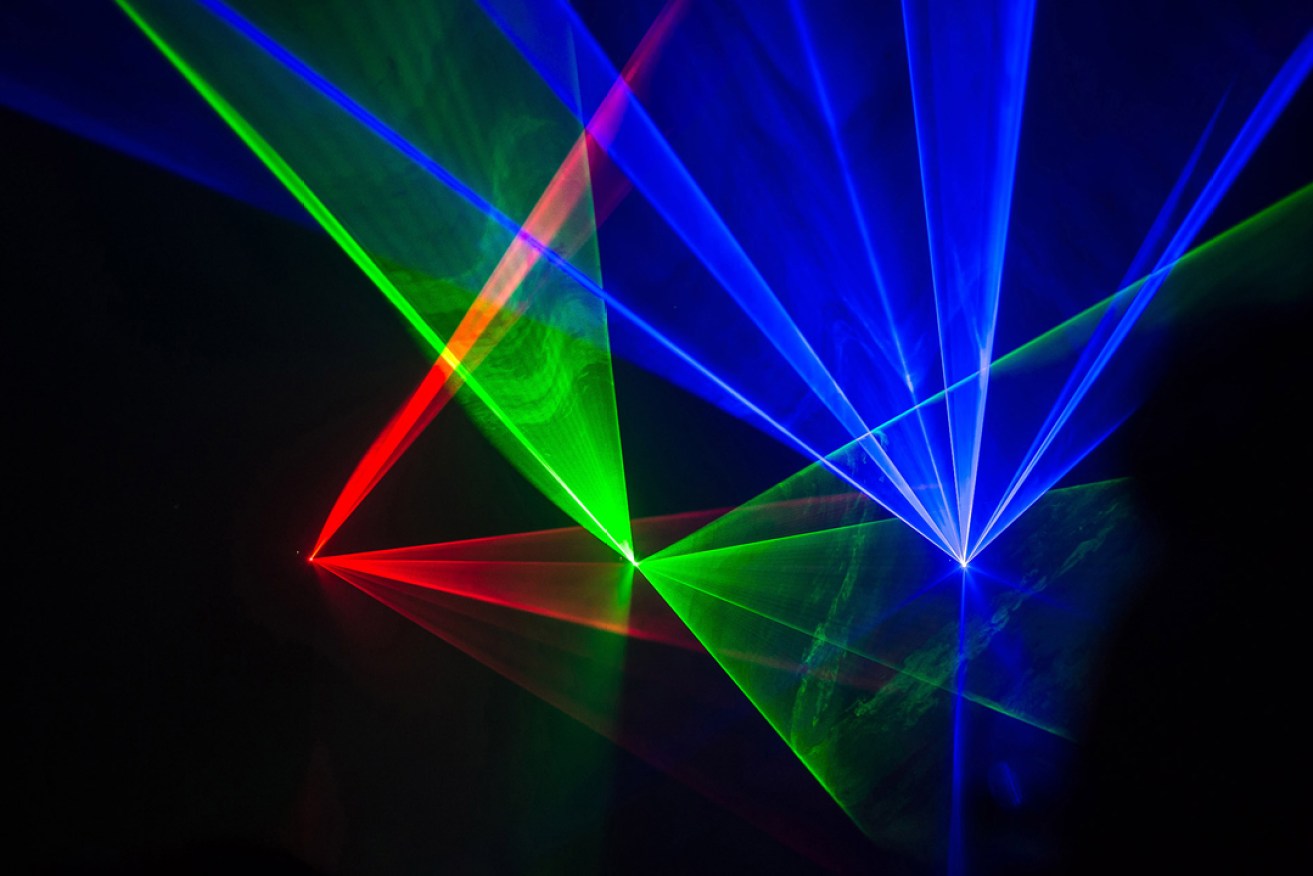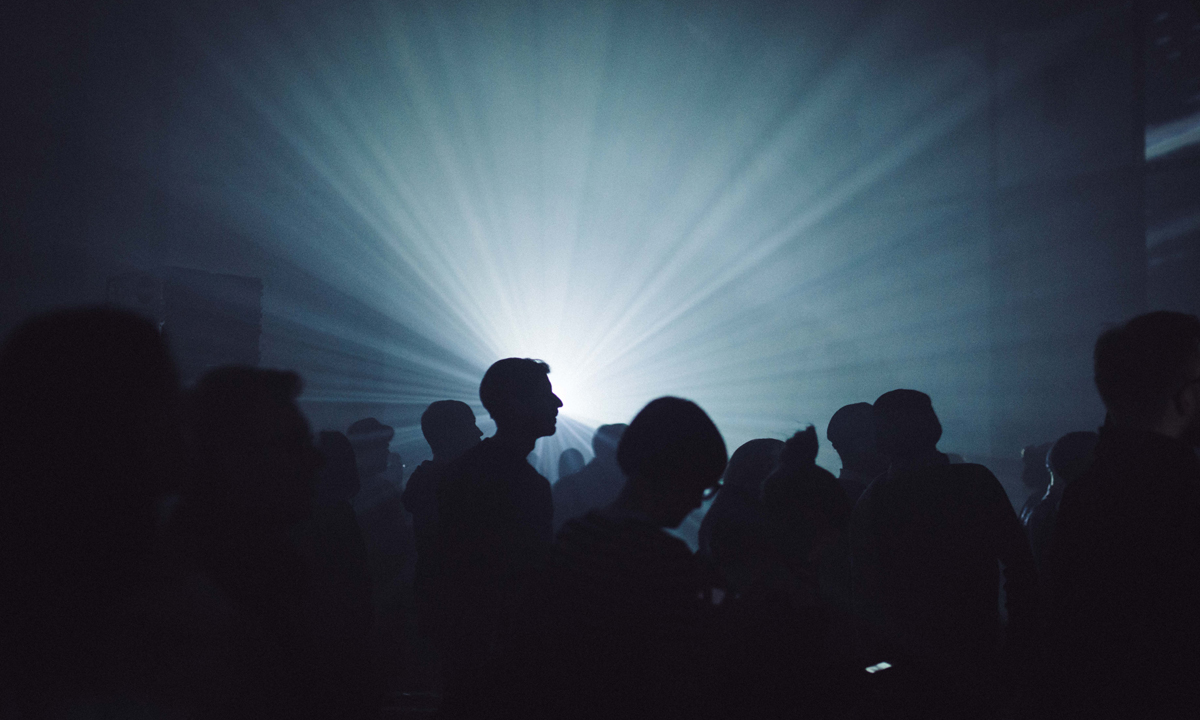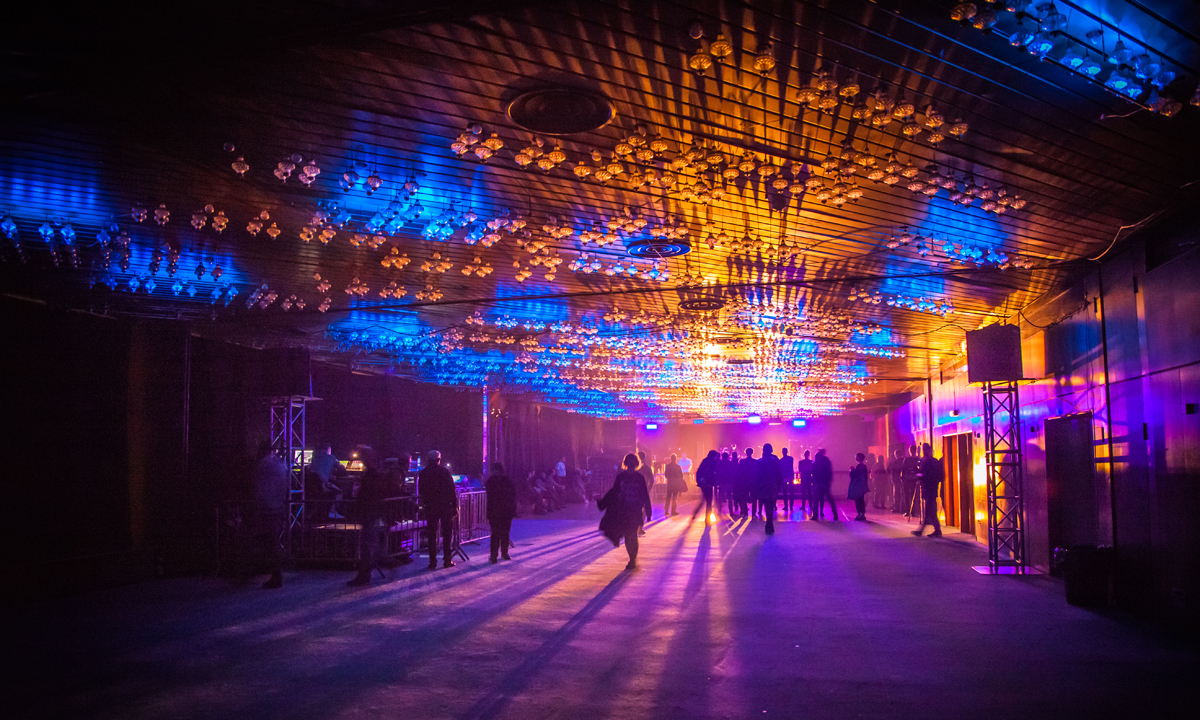Unsound: A laboratory of music, sound and visual art
Mat Schulz admits that when he launched the first Unsound festival of experimental and electronic music in the Polish city of Krakow in 2003, it was ‘a bit too weird for some’. Now, it has become a phenomenon internationally – including in Adelaide.

A laser display during a show by Atom and Robin Fox at Unsound Adelaide in 2015. Photo: Rob Sferco
Former Adelaide Festival director David Sefton introduced Unsound to Adelaide as a themed concert series under the umbrella of his 2013-2016 festivals, then announced this year that he was bringing it back as a stand-alone event in collaboration with Schulz.
Taking place this weekend, the 2017 Unsound Adelaide comprises a program of live shows at the Thebarton Theatre featuring boundary-pushing, genre-blurring Australian and international artists, as well as club nights at Fowler’s Live, an installation at the Botanic Gardens, and a talks program at the Hawke Centre.
“This year’s Adelaide event is the closest in its program to the original Krakow Unsound, as it’s the most risk-taking, including the latest strains of both experimental and club music, and the areas that lie between,” Schulz, who is originally from New South Wales, tells InDaily.
Below, he offers some highlights from the program, explains what Unsound newcomers can expect, and reveals how a festival that started out as a “hobby on the side” ended up spawning events in New York, London, Toronto and Adelaide.
You first became immersed in the experimental music scene in Krakow – what was it that attracted you?
Actually, I first moved to Krakow as a writer, after my first novel had been accepted for publication. I wanted to live outside Australia and write somewhere. At the same time I was always interested in music, and in 2003 a friend and I started Unsound in Krakow.
There was no festival like that in Poland at the time, and not many in Europe in general. It was meant to be a small thing, a kind of hobby on the side while I worked at my writing. Things turned out different, of course.
How was the first Unsound festival received in 2003?
The second night of the festival, the bouncers at one club actually came on stage to turn down the volume of the band that was playing, an argument erupted, and we were thrown out of the venue. The third night, eight people bought tickets. So it was obviously a bit too weird for some!
At the same time, some people loved Unsound, and so we decided to continue. For several years the festival remained a small DIY affair, taking place in underground medieval cellars in the Old Town.
Unsound started to grow both with a wider interest in electronic and experimental music, as well as support from the Krakow city council and us producing events abroad, especially in New York.

Emptyset perform at the 2016 Unsound Adelaide. Photo: Camille Blake
For the uninitiated, how would you describe the ideas and culture behind Unsound, and the kind of music experience people can expect at the live shows?
I always say that you don’t come to Unsound to confirm what you know, but to discover. We present emerging artists, premieres and commissioned works.
This year’s Adelaide event is the closest in its program to the original Krakow Unsound, as it’s the most risk-taking, including the latest strains of both experimental and club music, and the areas that lie between.
The whole festival is a laboratory of music, sound and related visual arts.
How has the experimental and electronic music scene grown and changed around the world since 2003?
There’s a much bigger interest in electronic and experimental music, so much so that artists who’ve played at Unsound often get involved in working with mainstream stars, or have become much bigger themselves. Genres affect one another, or the idea of genre becomes less relevant.
The borders between experimental and club music are also collapsing, as is apparent in this year’s Unsound Adelaide program. For many different reasons, people are also more open-minded and open-eared in the way they listen. Generally this means that there are more festivals like Unsound now, especially in Europe, and that a festival like Unsound can have a much bigger audience.
There’s also been a big rise in the number of audio-visual shows that are a way of presenting experimental music live.
Back in 2003 it was common for an audience to stare at someone playing live on their laptop, with no backdrop. Now artists try to think about how to create works that are immersive and engage the audience in different ways.

There has been an increase in the number of audio-visual Unsound shows.
How influential are Australian artists on that scene?
There are some extremely influential artists, such as Ben Frost, Oren Ambarchi, Lawrence English and Robin Fox, all of whom we’ve worked with closely via Unsound.
You can see the effect of their work in many different places. If we cast the net more widely and look back, you can also include the likes of Jim Thirlwell, Nick Cave and Warren Ellis – they’ve all embodied a spirit of risk-taking and experimentation via their music, and all had a huge impact, of course.
Adelaide is one of five international Unsound host cities and the only one in this country. Were you surprised at the festival’s success here?
Not really. I think there’s a very big hunger for this music in Australia, but because the country is so far away from Europe and North America it makes it hard to bring a large number of artists from these scenes at once in the form of a festival. We were able to do that via our collaboration with David Sefton and the Adelaide Festival, and their radical decision to produce Unsound as a festival within an arts festival. It worked.
We couldn’t be happier that Unsound Adelaide has now become a stand-alone event, allowing us to present an even bigger program.
What three or four shows/artists on the 2017 Unsound Adelaide program would you nominated as absolute must-sees for fans of experimental and electronic music?
Every single act in the program is a must-see – there’s absolutely no filler! But if I had to suggest just a few, I would definitely say don’t miss Senor Coconut aka Atom TM aka Uwe Schmidt, who is coming with an eight-piece band that blends electronic music with Latin rhythms and textures to play covers by the likes of Kraftwerk, Sade and Michael Jackson. It’s very fun, and will appeal to the Unsound crowd as well as a wider audience.
Holly Herndon is also fantastic, an artist who deconstructs her voice live to create very unique experimental pop music.
Pharmakon uses her voice in very different ways, to create visceral industrial noise music.
Lexachast will blow your mind with a stunning audio-visual show.
I could go on and on – and mention every artist in the program. Also, everyone should go to the Unsound club nights, as whether you decide to dance or simply listen, you’ll get to experience some of the freshest sounds around.
Unsound Adelaide will take place from November 16-19, with the full program available here.




